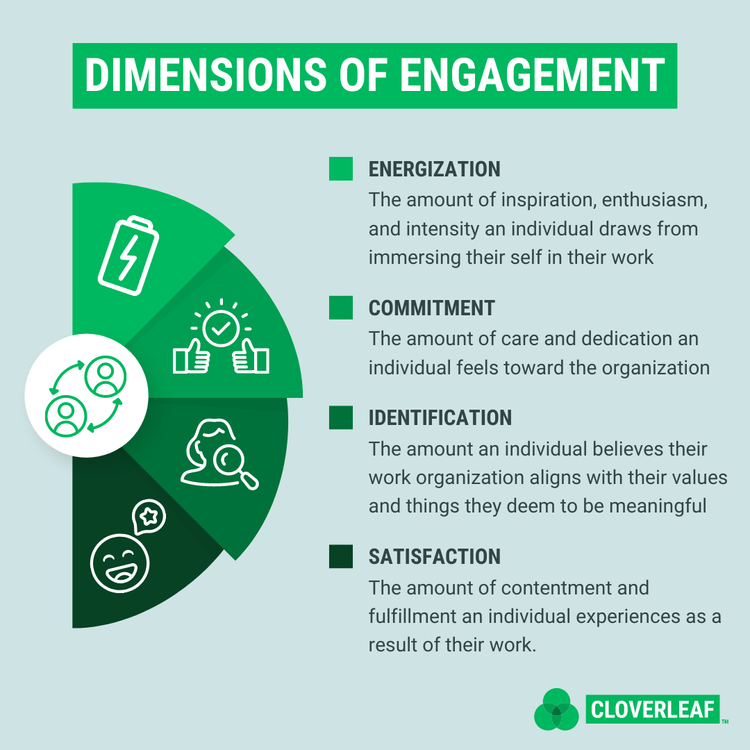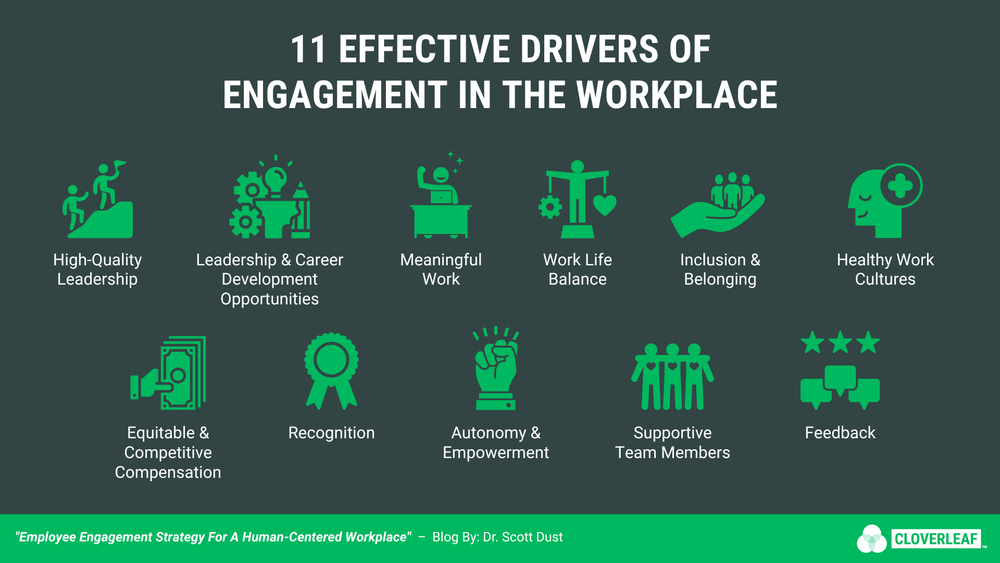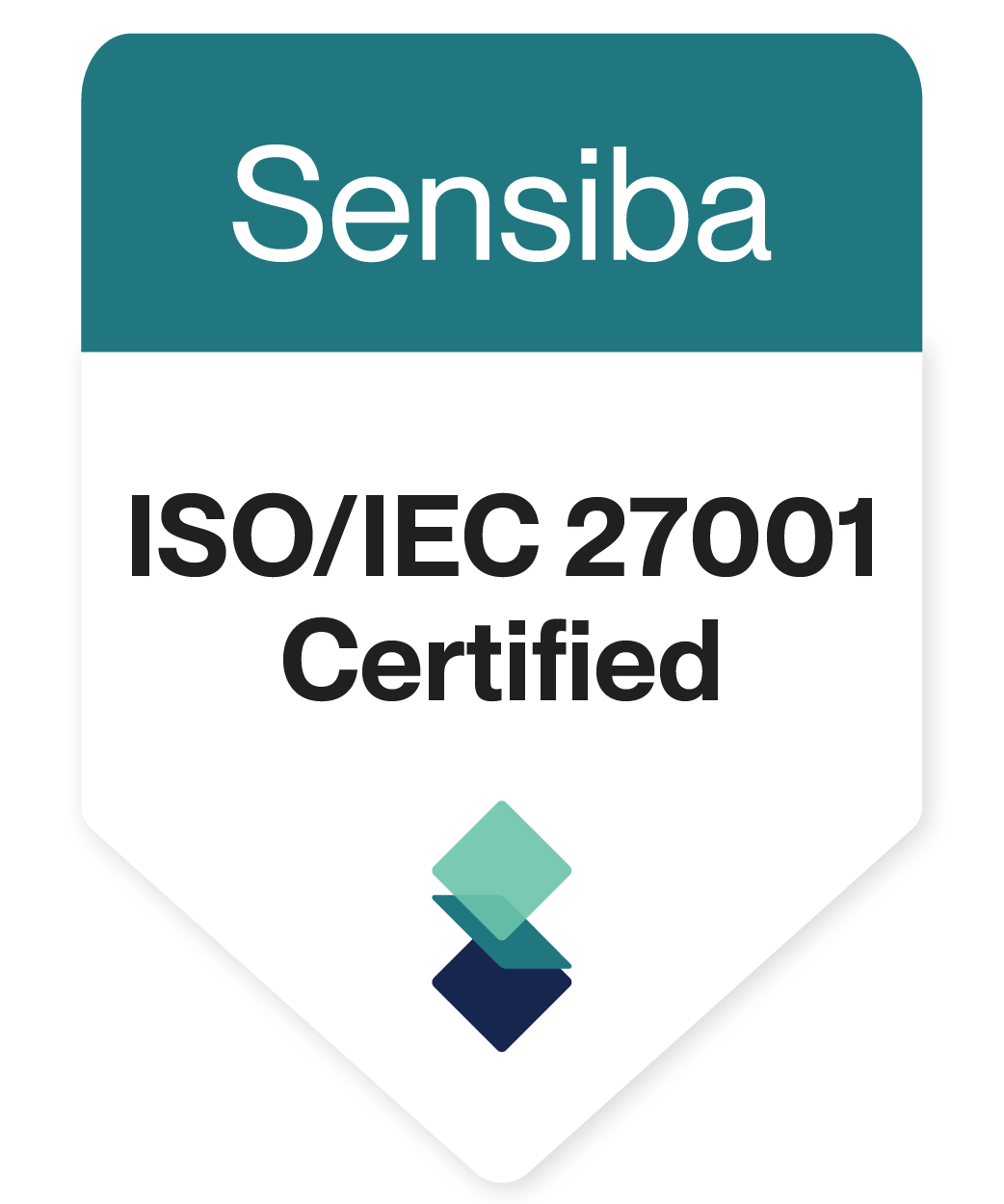Research suggests that a dismal 15% of employees worldwide actively engage in their place of work. This is unfortunate, as findings suggest that engagement is related to a host of beneficial outcomes, including performance, job satisfaction, and organizational commitment.
Over the last decade, we’ve come a long way in figuring out how to measure engagement. We’ve also made great strides in figuring out how actually to increase employee engagement. The challenge, however, lies in the execution. Organizations that do it well will experience the greatest return on their investment.
Concerning this, outlined below are several aspects of implementing a successful employee engagement strategy. You’ll also find the nuanced difference between engagement and motivation, along with evidence-based recommendations of the specific metrics and drivers of engagement to ensure you get it right with your team.
What Does Employee Engagement Mean?
The most widely-cited academic definition of engagement is a positive, fulfilling work-related state of mind characterized by three dimensions:
Vigor – high energy and mental resilience
Dedication – a sense of significance, enthusiasm, inspiration, pride, and challenge
Absorption – being fully concentrated and deeply engrossed in one’s work.
Interestingly, organizational settings often provide a broader conceptualization for understanding engagement factors. Feeling energized at work through vigor, dedication, and absorption is one of four formative engagement indicators.
The other three are: feeling a commitment to the organization, identifying with the organization, and feeling satisfaction from their job.
With this conceptualization, engagement is not just how the employee feels while working but also their relationship with their job and organization.
This broader context helps explain why engagement surveys ask about much more than just energy at work.
SIDE-BAR: Is engagement the same thing as motivation?
Many people confuse engagement with motivation. Technically, engagement is one form of motivation, assuming that engagement leads to some change in behavior (e.g., more effort, more prosocial behavior, etc.). However, more clearly understood, motivation considers a process whereby the intensity and persistence of a targeted effort are observed.
Therefore, when organizations refer to engagement, energy, job satisfaction, organizational identity, and organizational commitment, it is a combination of factors representative of heightened motivation.

HUMAN SKILL PROGRAMS ARE HITTING LIMITATIONS...
- Close the widening gap between learning and on-the-job application
- Overcome the tension of pausing productivity for development opportunities
- Integrate learning so it is actually in the flow of work
- The evolution of human skill development
- What Automated Coaching™ is and how it works.
Which Engagement Metrics Are Most Important?
When implementing engagement surveys, you need to consider two metrics: dimensions and drivers.
The first and most apparent set of metrics entails measures of the four dimensions of engagement.

The 4 Dimensions Of Engagement
Energization: the amount of inspiration, enthusiasm, and intensity an individual draws from immersing their self in their work
Commitment: the amount of care and dedication an individual feels toward the organization
Identification: the amount an individual believes their work organization aligns with their values and things they deem to be meaningful
Satisfaction: the amount of contentment and fulfillment an individual experiences as a result of their work.

This baseline for measuring engagement helps increase understanding so that you can track whether certain engagement metrics are increasing or decreasing across time.
The second set of metrics entails the predictors (also called drivers) of engagement. Or, in other words, the actual levers that are causing engagement to increase or decrease.
Across an assortment of organizations that offer employee engagement tools, their internal research suggests that some of the most critical drivers of engagement include excellent leadership, career-growth opportunities, non-toxic work environments, and collaborative teams.
11 Effective Drivers Of Engagement In The Workplace
High-Quality Leadership
Leadership & Career Development Opportunities
Meaningful Work
Work-Life Balance
Inclusion & Belonging
Healthy Work Cultures
Recognition
Feedback
Autonomy & Empowerment
Supportive Team Members
Equitable & Competitive Compensation

SIDE-BAR: Any guesses on which predictor is consistently one of the most impactful drivers of engagement? Supportive leadership.
Employees that have leaders or managers that are respectful, transparent, and supportive is the clear winner.
Additionally, a recent predictor is a significant consideration concerning an employee engagement strategy: time affluence.
Post-pandemic, employees are beginning to express that they want more than work-life balance but also tools (e.g., high-quality virtual meeting tools) and systems (e.g., work-from-anywhere or work-anytime) that facilitate employees’ ownership of when and where they’ll work.
7 Ideas To Create An Employee Engagement Plan
1. Provide a leadership development program for managers and supervisors to assist with upskilling leadership within your organization.
2. Implement opportunities for personal development in the workplace to strengthen leadership and career skills by supporting training unique to team members’ roles.
3. Provide coaching opportunities for employees to help them grow personally and professionally.
Cloverleaf serves daily Automated Coaching™ tips that help employees increase self-awareness and emotional intelligence, fostering a physiologically safe workplace and team effectiveness.
4. Offer remote work options, including the ability to work from home or other remote locations and flexible schedule options, to empower employees to manage their work and personal commitments better while still achieving their job responsibilities.
5. Facilitate open communication among employees by implementing the following strategies:
Encourage two-way communication between management and leadership and among teammates.
Practice transparency by sharing information about the organization’s goals, plans, and performance to build trust and understanding.
Encourage collaboration by creating opportunities for cross-functional teams, project-based work, or group problem-solving.
Use technology like Slack and 15Five to facilitate faster and easier communication.
Celebrate teamwork by recognizing and rewarding teams and individuals who work together, support one another, and model your organization’s values.
Work hard to clearly communicate the organization’s mission and values to employees and ensure that their work aligns with these goals.
Facilitate regular, timely, and constructive feedback.
6. Recognize and reward employees for their contributions to the organization. Use a tool like Bonusly that includes both formal and informal ways to acknowledge and appreciate team members.
7. Provide employees with equitable and competitive compensation packages aligned with their skills and experience. Regularly review and adjust compensation packages to ensure they remain competitive in the marketplace.

These characteristics of the future workplace experience represent trends changing employee expectations of their leader and teammates. Employers can prevent toxicity and promote an effective employee engagement strategy by actively implementing a plan that values teamwork and collaboration.
Critical Components For A Successful Employee Engagement Strategy
Implementing an employee engagement strategy is crucial for organizations; however, there are three key components to ensure it is effective and successful:
Surveying Employees
Interpreting The Results
Acting On Results
This process should be ongoing, focusing on identifying positive and negative contributors affecting engagement and the measurable next steps based on the results. Doing so can better ensure that the organization continuously improves its engagement strategy and fosters a human-centered workplace.

When And How To Survey Employees
Organizations typically use engagement surveys in one of three ways:
Annual Benchmarks
Ongoing Pulse
Initiative-Based
1. Annual Engagement Surveys
These surveys tend to be lengthy, in-depth, and have a mix of quantitative (e.g., 1 = strongly disagree, 5 = strongly agree) and qualitative (e.g., open-ended text response) questions. These surveys give organizations a broad annual benchmark for how they’re doing.
2. Pulse Surveys
These are typically around five questions and are pushed out to participants from weekly to monthly. These shorter surveys tend to have higher participation when the questions are quantitative and straightforward.
The benefit of the pulse survey approach is that it ensures organizations know what’s happening throughout the entire year, in the moment. This allows organizations to make adjustments promptly. Tools like Officevibe can assist leaders in making this process easier.
3. Initiative-Specific Engagement Surveys
These use customized questions relevant to the initiative to ensure immediate and targeted feedback.
Organizations will inevitably change as their industry evolves or objectives are rolled out as strategies. Planning a well-timed engagement survey in coordination with this effort can help keep things on track.
How To Interpret Employee Engagement Survey Results
Analyze the data to figure out which predictors are changeable or worth changing. The goal should be to understand the most influential predictors of low engagement scores. Some engagement tools automatically conduct these analyses.
When interpreting these results, it’s best to only focus on one or a few key metrics at a time. Changing too much too quickly will make it challenging to understand what is working or not and how best to apply the findings within your employee engagement strategy.
What To Do With The Results
One of the quickest ways to see employee engagement survey participation drop is to fail to act on the results. It’s best to be transparent about the results, show how the results compare to similar organizations, and communicate a clear action plan on what they will do to improve specific metrics.
These communications tend to work best when leaders add a narrative that can help interpret the results at the organizational level. Then managers can use the results at the team level or during one-on-ones’ with direct reports.
Perhaps, one of the biggest challenges with engagement tools is that they are heavily weighted towards diagnosis but not prognosis.
Engagement tools are great at understanding what’s wrong, but they aren’t built to help organizations understand what to do about it. Typically, these solutions must be customized to address the organization’s specific context.
By understanding when and how to conduct employee engagement surveys, interpreting the results, and taking action based on those results, organizations can gain valuable insights to improve the plan continuously.
3 Common Questions and Concerns About Employee Engagement
Should we use an engagement tool service or do it ourselves?
Although engagement tools can be expensive, the key benefit is that they ensure the engagement responses are anonymous. If an organization sends out a survey to employees, the employees will inevitably assume that their responses can be tracked back to them individually.

No matter how much an organization promises that the responses will be confidential, it isn’t likely to land with employees. Relatedly, engagement tool services typically set a threshold for which there must be a certain amount of responses before data are revealed. This policy can increase employee response rates since they know they won’t be exposed if they make a qualitative comment in a survey that could be traced back to them individually.
Another critical consideration is whether the engagement tool service will allow you to view data at the individual level or not. Sometimes engagement tools only give access to the aggregated reports, which makes it hard for organizations to understand the nuances of their findings. For example, aggregated findings can hide outlier data that could be the source of a brewing issue or accidentally cover up the fact that the data distribution is bi-modal, with half the employees rating low and the other half rating high on a particular metric.
What should we do if the employee participation rate is low?
One of the most important things organizations can do is have senior leadership express why surveys are being implemented and how they will be used to make employee-friendly changes.
Also, as previously mentioned, organizational leaders must act on the data. If they don’t, employees will perceive that their participation is not worth the time.
Additionally, organizations should dial in the length and cadence of the surveys. The longer and more often, the lower the participation.
Low participation rates are problematic. Without a complete sample representation, the results might be inaccurate or directly signal that the employees are disengaged.
How are machine learning and artificial intelligence being used in engagement surveys?
Although some organizations are starting to implement sophisticated algorithms that help deliver suggestions to users of engagement tools, it’s not quite reached the threshold of being considered machine learning.
Machine learning would entail outputs from the system being automatically reintegrated into the algorithm so that it updates (i.e., “learns”) in real-time, generating better and more tarted results on the next iteration.
Along those lines, organizations should not assume technology can solve engagement issues.
The recommendation here is to take a “tech-first approach,” which recognizes that people can’t process data with the same accuracy and efficiency as machines, so using technology to be the front line that helps direct people’s attention is worthwhile. Nonetheless, people and social systems are complicated, and it takes people capable of critical thinking and intuition to ensure the direction is ideal.
Conclusion
Employee engagement is a crucial aspect that organizations cannot afford to neglect. Ignoring engagement can lead to unhappy and unproductive employees, resulting in a detrimental impact on the overall performance of the organization. But why settle for mediocre results when it’s possible to achieve greatness? By understanding the importance of employee engagement, organizations can create a roadmap for success by identifying what to measure, how to measure it, and a plan for taking action on the results.
Without a strategy to engage your team, it will probably never happen. Using a plan while measuring what is effective will help prevent guesswork and provide clarity for your team.
In short, investing in an employee engagement strategy is not a luxury but a necessity for organizations that want to achieve their full potential and stay competitive in today’s market.









